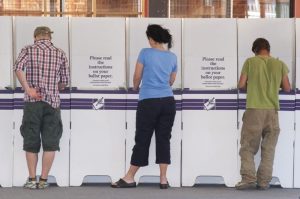Migrant, refugee communities struggle with Australia electoral process – survey
Newly arrived refugee and migrant communities have a poor understanding of, and low level of engagement in, Australia’s electoral process, a survey of community leaders has found.
A focus group of 32 community leaders in 21 key cohort migrant and refugee groups say their communities are not served or represented properly by Australia’s electoral system.
And they do not have access to accessible information on how the system works.
Almost two-thirds (62.5 per cent) of community leaders surveyed said members of their community generally had ‘no’ or ‘little’ understanding of the electoral process; and only 25 per cent said there was a general understanding.
Thirty-eight per cent of respondents said their communities had ‘little’ or ‘no’ engagement or interest in the electoral process while a similar percentage said there was engagement and interest.
Only 25 per cent of respondents said their communities’ needs and priorities were served by the electoral process, while 53 per cent of their communities were not served.
Of the three tiers of government, local government was seen as the most responsive to communities’ needs, the survey found.
 Forty-four per cent of respondents said their communities’ needs were served by local governments. The figure was just 28 per cent for state governments and 19 per cent for the federal government.
Forty-four per cent of respondents said their communities’ needs were served by local governments. The figure was just 28 per cent for state governments and 19 per cent for the federal government.
Access to information about the electoral process was identified as a major issue by the survey, commissioned by migrant and refugee settlement agency AMES Australia.
Only six per cent of respondents believed there was accessible and adequate information about elections available to their communities, while 56 per cent said there was not.
There was also little understanding of Australia’s preferential and proportional voting system. Only six per cent said their communities had an understanding of voting arrangement, while 59 per cent did not and 28 per cent said there was ‘a little’ understanding.
However, most communities (59 per cent) are aware voting is compulsory for those registered. But there is some confusion over how to vote with 28 per cent of respondents saying members of their communities did not know how to vote or where to go.
Also, three quarters of respondents (75 per cent) said members of their communities where not aware that citizenship, was not a pre not a prerequisite for voting in local elections, and that permanent resident homeowners can vote.
AMES Australia CEO Cath Scarth said the survey showed there was work to be done to help newly arrived migrants and refugees gain an understanding of Australia’s electoral process.
“We know from working with communities that migrants and refugees value citizenship, take it seriously and want to develop a sense of belonging. So, we need a range of strategies to help them gain an understanding of, and commitment to, out electoral process.
Syrian community leader ‘Norma’ said members of her community, and particularly women, had very little access to information on the electoral process and how to enrol or vote.
“Most people don’t know what to do. We try to offer support but there seems to be not a lot in-language information available,” she said.
“We also have cultural barriers around elections. In our country, people were nervous around elections. Everyone voted the way the government told them to and there could be serious consequences if someone didn’t.
“I think we need an information campaign for my community, and others, telling people that voting in Australia is fair and free. There is no coercion and when you vote it is anonymous.”
Chinese community leader ‘Suan’ members of her community struggled to understand how Australia’s electoral system works.
“In some elections, there can be 80 or 100 candidates on the ballot paper which need to be numbered in order of preference. So, if someone wants to for a candidate and they are 30 on the ballot, they need to put 1 in that box and fill out the other boxes in order of preference. If they miss one, it means the ballot is not counted,” she said.
“I think we need an information campaign around this to explain these things. But it needs to be designed with communities, so people actually understand what is being communicated.”
Indian community leader ‘Rita’ said members of her community were confused about some aspects of Australia’s electoral system.
“In Australia we have a proportional representation voting system, where a candidate who gets 40 percent of the vote could still lose to one with 35 percent once preferences from other parties are distributed,” Rita said.
“People are confused by this, and I have seen it spark some conspiracy theories. We need more education and information to explain this,” she said.
Venezuelan community leader ‘Aaron’ said members of his community have a come a chaotic political climate.
“Our community is very suspicious of politics, given what has happened has happened in our country over the past 20 years,” Aaron said.
“So, it came take time for people from new migrant communities to develop and understanding of Australian elections. But in the meantime, this gap in understanding can allow for the rise of misinformation and disinformation which can damage the system,
“We really need some accessible in-language education and information on how the system works and how to be part of it,” Aaron said.












